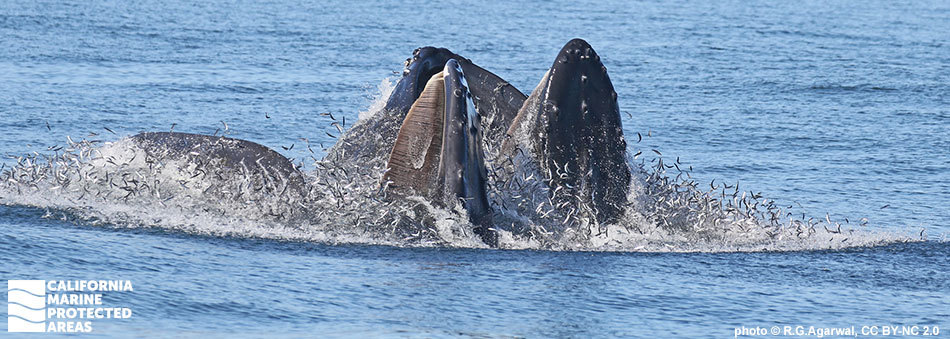
Overview
Soquel Canyon State Marine Conservation Area (SMCA) lies nine miles south of Santa Cruz and ten miles west of Moss Landing in Monterey Bay. This marine protected area (MPA) covers almost 23 square miles and is located within the boundaries of the Monterey Bay National Marine Sanctuary. The large offshore SMCA protects depths from approximately 275 feet to more than 2,100 feet, making it one of the deepest MPAs in California. This depth is attributed to the Monterey Submarine Canyon, an underwater formation that rivals the Grand Canyon in size. The SMCA protects nearly three square miles of a small offshoot of the submarine canyon.
The offshore location means it is only accessible by boat, but with deep, nutrient-rich canyon waters upwelled each spring, this SMCA offers many amazing opportunities for wildlife viewing. With unique geology and great depths, Soquel Canyon SMCA protects rockfish, rarely seen species of sharks, crabs, and colorful anemones, all contributing to this diverse and productive ecosystem. Each year, Monterey Bay hosts a wildlife viewing display that rivals some of the best in the world. Humpback, gray, and blue whales feast on plankton, krill, and schooling fish, and dolphins, seals, and sea lions join the feast by hunting schools of baitfish while seabirds dive into the water from great heights, adding to the chaotic scene. Other marine life thrives in the area, though not as easily visible.
Within Soquel Canyon SMCA, the take of all living marine resources is prohibited with the exception of fishing for pelagic finfish (a list of the allowed species that are included can be found in the "Regulations" section below).
Regulations
It is unlawful to injure, damage, take, or possess any living, geological, or cultural marine resource, EXCEPT:
Recreational and commercial take of pelagic finfish (northern anchovy, barracudas, billfishes, dorado (dolphinfish), Pacific herring, jack mackerel, Pacific mackerel, salmon, Pacific sardine, blue shark, salmon shark, shortfin mako shark, thresher shark, swordfish, tunas, Pacific bonito, and yellowtail) is allowed. No commercial take of marlin is allowed. Not more than five percent by weight of any commercial pelagic finfish catch landed or possessed shall be other incidentally taken species.
California Code of Regulations Title 14, Section 632(b)(73)(opens in new tab)
Quick Facts
MPA size: 22.97 square miles
Depth range: 274 to 2,113 feet
Habitat composition*:
- Sand/mud: 22.61 square miles
- Rock: 0.37 square miles
*Habitat calculations are based on three-dimensional area and may exceed the total MPA area listed above.